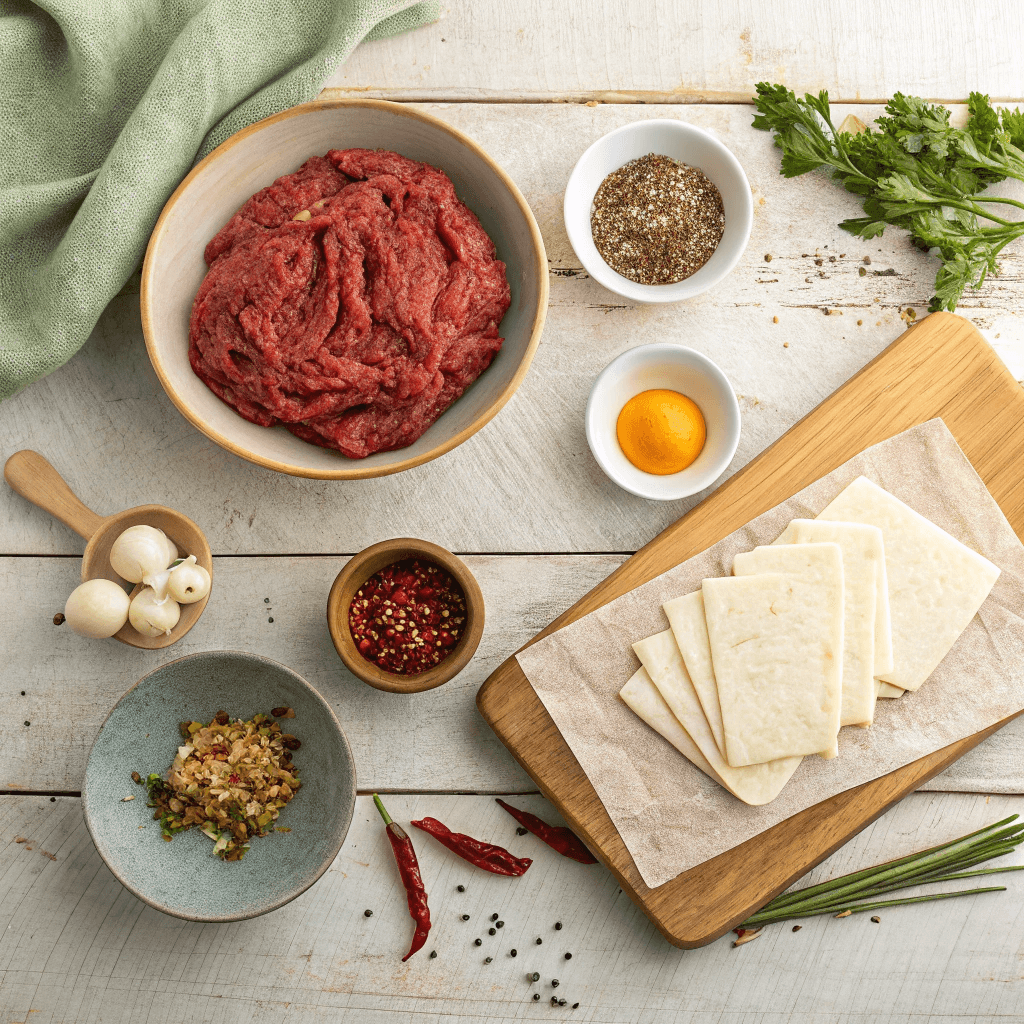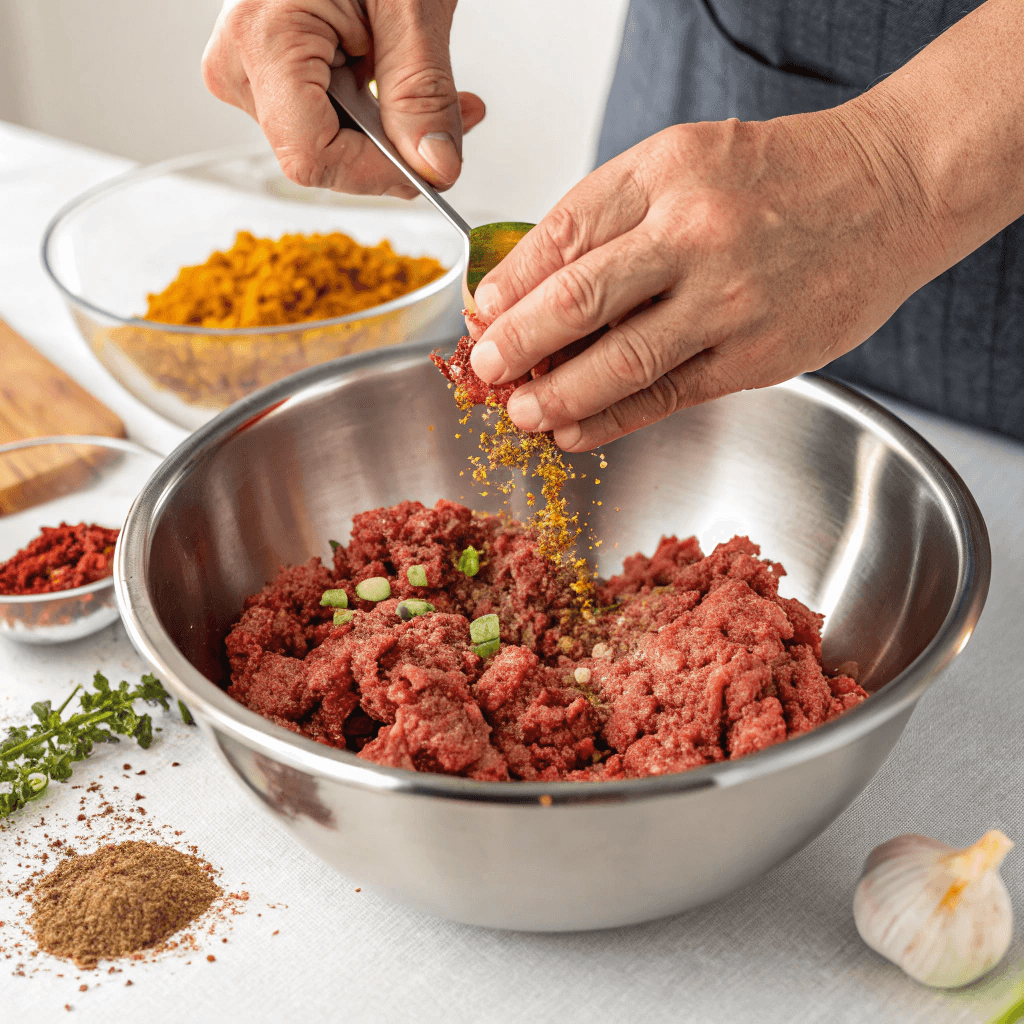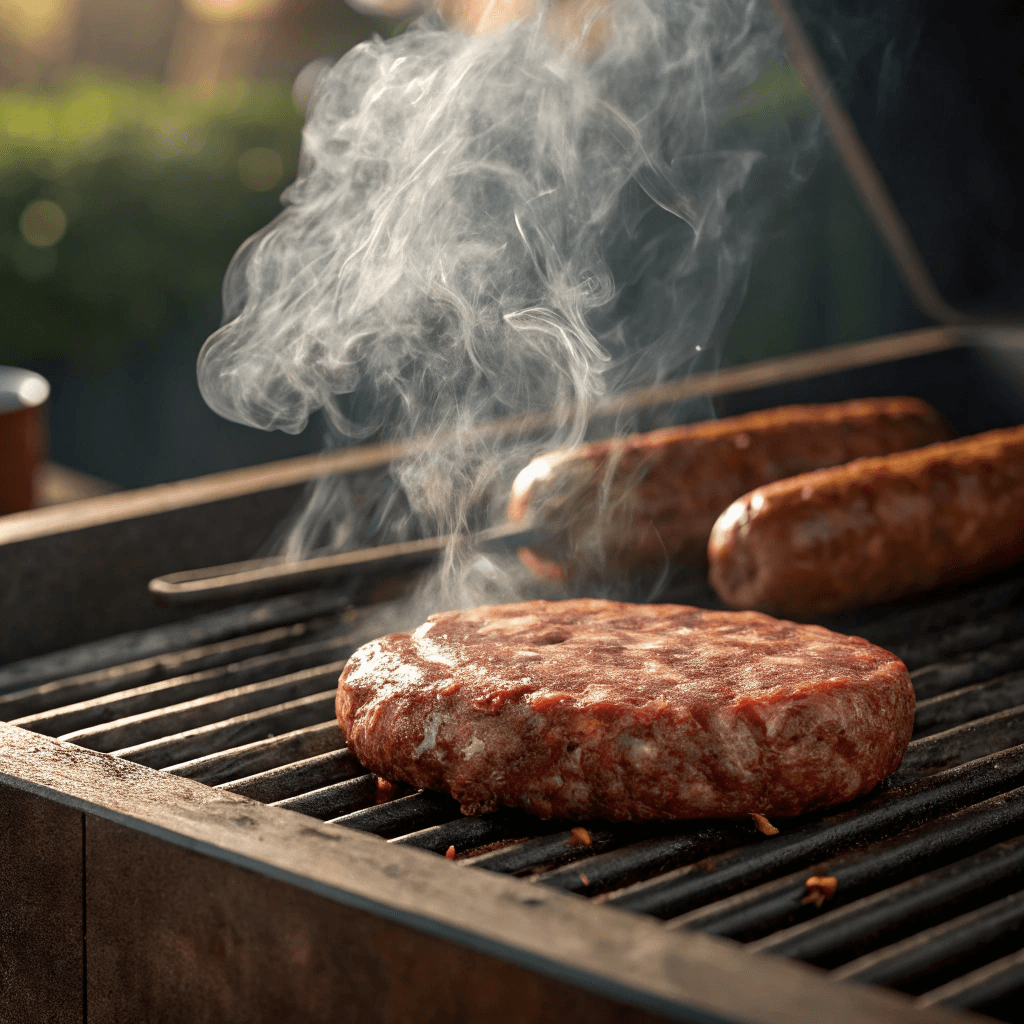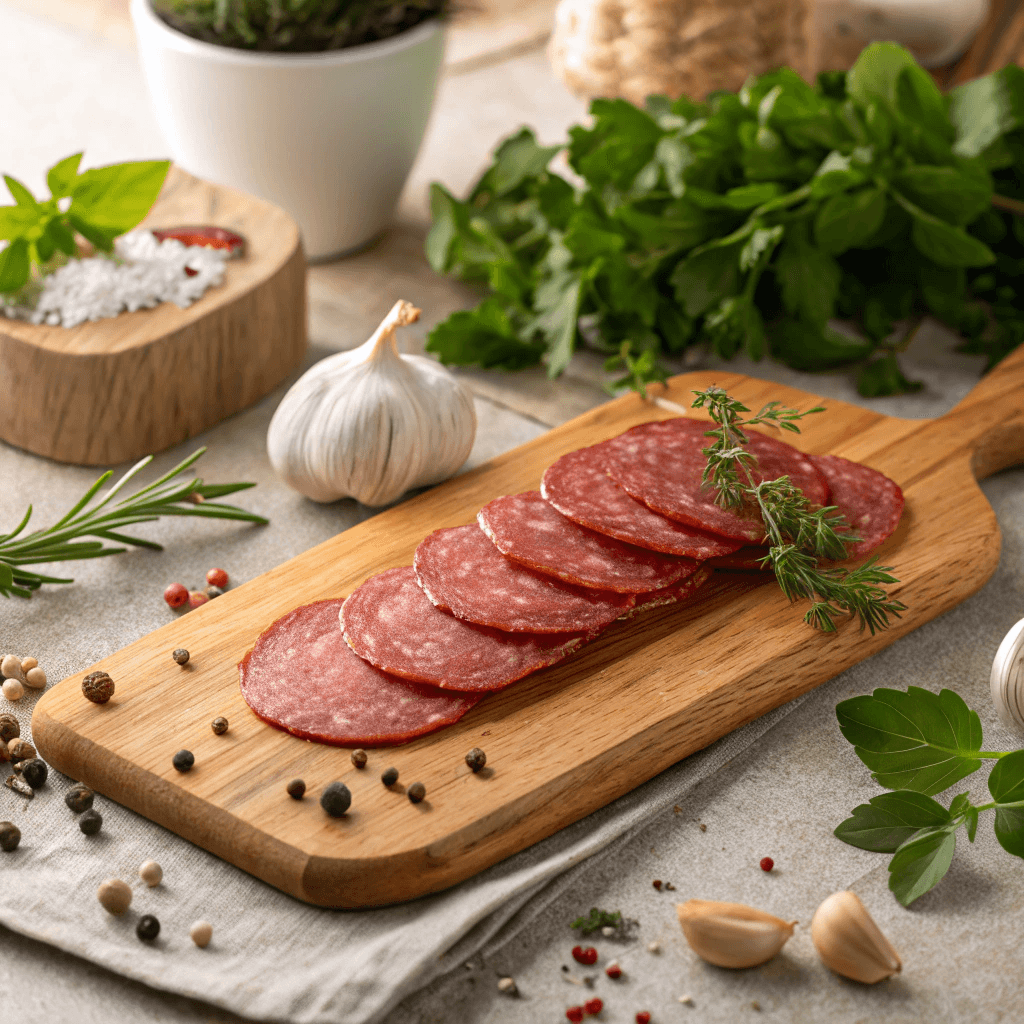Beef pepperoni isn’t just an amazing alternative to regular pepperoni. It’s an ingredient with a variety of uses that can cater to a variety of dietary requirements and preferences. When you’re seeking halal alternatives, seeking pork-free alternatives or experimenting with the latest flavors, beef offers a variety of options. Since more people are seeking more inclusive and innovative food choices. The delicious treat has seen a huge rise in recognition.
Table of Contents
How to Make Beef Pepperoni Step-by-Step
The process of making your own pepperoni from beef is a fun and enjoyable process that offers an absolute control over ingredients and taste of the product. In contrast to the store bought alternatives. Making your own beef pepperoni lets you alter the level of spice as well as ensure Halal. Certification and produce a unique product that you can customize to your taste. Use this step-bystep instructions for the perfect result.
Ingredients You’ll Need
Begin by gathering the ingredients listed below.This quantity is perfect for preparing a moderate sized batch suitable for various dishes.
- 2 lbs of beef ground Choose less fattened beef to get the most flavor and decreased shrinkage while the cooking process.
- 2 tablespoons salt from kosher improves the taste and aids in the preservation of meat.
- 1.25 teaspoons of sugar helps balance the spice and improves the taste of beef.
- Two teaspoons Smoked paprika adds a smokey flavor that’s typical of the traditional pepperoni.
- One teaspoon garlic powder provides a delicate yet essential garlic taste.
- 1 teaspoon onion powder It complements garlic and enhances the flavor of your dish.
- 1 teaspoon cayenne pepper adjust according to your tolerance for spice to create a custom degree of heat.
- 1 tablespoon of black pepper: Coarsely ground for extra flavor and taste.
- 1 tablespoon of Fennel seeds The seeds will bring out the traditional taste of pepperoni.
- 1 teaspoon of salt for curing is a vital ingredient in both preservation and flavor enhancement.
- 1 tablespoon of liquid smoke (optional, but it enhances the smoky flavor of authentic pepperoni).
- natural casings The casings make the pepperoni have its typical sausage-like shape.
Every ingredient carefully picked and assessed, adds a significant amount in the final product. It is therefore crucial to guarantee high-quality and quality when you source your ingredients.

Step-by-Step Preparation
Step 1: Mix the Beef and Spices
In the beginning, mix together ground beef, salt from kosher sugar, smoked garlic powder, paprika onions powder, cayenne pepper Fennel seeds, black pepper curing salt and liquid smoke into an enormous mixing bowl. Utilize either your hands, or a solid spatula to mix the ingredients. Be sure the spices are evenly dispersed throughout the meat. Mix thoroughly to create a uniform flavour in the end product.
Also, letting the dish sit in the fridge for two or three hours will allow the flavors to blend with each other. The time of rest is crucial because it allows to let the spices infiltrate the meat and create an intense and balanced taste.
Step 2: Prepare the Casings
As the mixture of meat rests in the fridge, make the casings that are natural. In the beginning, soak them in warm water for a few minutes to make them more pliable and allow them to manage. Wash the casings thoroughly with water to get rid of salt and preserve their quality. A proper preparation will ensure that the casings remain elastic and easily handled when stuffing the meat.
If you do not have natural casings to use, you could form the meat mixture into a tight log using the plastic wrap. Though this approach isn’t going to give you the classic sausage appearance, it’s an alternative that is practical.
Step 3: Stuff the Casings
Attach the casings to a sausage stuffer or a piping bag. Fill the casings in with the mixture of beef and work slowly and equally to prevent air pockets. Air pockets may create uneven cooking and alter the form of the sausage make sure you are thorough in this process. Connect the casings’ ends tight to secure those pepperoni balls.
For those who use plastic wrap, simply roll the mixture of meat into circular shape and bend the ends in a secure way. Whichever method you choose, ensure the meat cooks evenly throughout the process.

Step 4: Cure the Pepperoni
Curing is the most important process that improves the taste and security of your beef pepperoni. Store the stuffed casings in a cool, dry, and well-ventilated space for up to 24 days. This method allows salts used for curing to work efficiently, increasing the unique taste and conserving the meat effectively.
When curing, make sure you keep the temperature consistent so that there is no chance of loss of flavor. If you do not have a appropriate space for curing, putting the logs in a wire rack within the fridge can serve as a viable alternative.
Cooking Instructions
After the curing process, the pepperoni is now ready for cooking. There are two main ways to cook beef pepperoni Smoking and baking. Both are efficient however they have slightly distinct flavor profiles and texture.
Smoking Method
- The smoker should be heated to the temperature of 165degF (74degC).
- The cured logs of pepperoni on the grills of your smoker and leave sufficient space between them that allows an even distribution of heat.
- Smoke the pepperoni over 4-5 hours, until the temperature is 150degF (65degC).
- Then, remove the logs and let them completely cool before cutting.
Baking Method
- Preheat the oven to 200°F (93°C).
- Cover a baking sheet parchment paper and put the pepperoni pieces on top of the baking sheet.
- Bake the pepperoni in about 4 hours. You should turn the logs frequently so that they cook evenly.
- After the internal temperature has reached 150°F (65degC), remove the baking logs and let them cool.
Baking can be a great option for people who don’t have access to smokers. It gives a lighter taste, but produces excellent, premium beef pepperoni.
Storing Your Homemade Pepperoni
Once the beef pepperoni has cooled, wrap it tightly in aluminum foil. You can also vacuum seal it in order to keep the freshness. It can be stored in the fridge for up to 2 weeks, or freeze it for up to 3 months. The proper storage will ensure that the pepperoni maintains its taste and consistency, and is ready for serving in sandwiches, pizzas or even as a snack.
Tips for Perfecting Your Beef Pepperoni
Making your own beef pepperoni is a fun and fun method. For the most effective outcomes, bear these suggestions in your head:
- Choose high-end ground beef. A leaner beef provides the finest texture and has very little shrinkage in the cooking process.
- Play around with the ingredients: Adjust the seasoning to match your personal taste. In particular, you could boost the cayenne pepper to add spice or even you can add Italian herbs to give it a distinctive variation.
- Manage the curing conditions: A stable temperature and adequate ventilation are crucial to achieve effective curing.
- Explore both cooking techniques: Smoking and baking all have their own unique flavor profiles and testing both of them could help you determine the flavor you prefer.
For more information on various lunch meat options and the way beef pepperoni is compared with other options from delis take a look at this Guide on Lunch Meats . If you like smoky flavours look into our Maple Bacon Guide to find recipes that complement each other.
Final Touches to Your Beef Pepperoni
At the point where you’ve reached the final stage of your preparation now is the time to concentrate on the final elements that raise your pepperoni from a basic into a high-end standard. These steps will guarantee your product is not just attractive visually, but also stuffed with the taste and the texture that you would want from a high-end pepperoni.
Step 5: Slicing the Pepperoni
Once the pepperoni beef has cooled, you can slice it. Make use of a sharp knife or a slicer for deli to get even, smooth slices. The thinner slices are perfect to use for pizza, however, thicker slices work well to serve sandwiches or snack items. Therefore, cutting the pepperoni precisely ensures it’s versatile and suitable for use in various recipes.

Step 6: Garnishing and Plating
If you are planning to serve the beef pepperoni dish for an appetizer or charcuterie platter, think about garnishing the dish with fresh herbs, or accompanying it with things like crackers, cheese and olives. The garnishing will not only improve the look of the dish but also gives it the flavor of the dish which complements the smokey spice that pepperoni has.

By following these guidelines, you’ll have a generous amount of beef pepperoni ready to enjoy in various delicious ways.
Pro Tips & Variations
The appeal of cooking beef pepperoni in your kitchen is the ability for you to tailor it to suit your preferences. Here are some tips from experts and modifications that let the user to explore different flavors as well as textures and diet modifications.
Flavor Variations
- Spicy Jalapeno Beef Pepperoni
Finely chop jalapenos and add them to the mix of meat prior to stuffing the casings. This version delivers a powerful hot, spicy flavor which is particularly popular with those who love heat. - Herb-Infused Beef Pepperoni
Include dried Italian herbs, like oregano and basil into your spice mix. They impart a smoky flavor that is perfect with Mediterranean cuisines. - Garlic Lover’s Pepperoni
The amount of garlic powder included in the recipe. You can also add roasted garlic to the recipe. This adds a savory flavor of the pepperoni and makes it a popular choice among garlic lovers.
Dietary Adaptations
- Gluten-Free Pepperoni
Make sure that all ingredients, such as spice and curing salts are gluten-free. Ensure that the organic casings and plastic wrap used during the preparation process are free from gluten contamination. - Low-Sodium Version
Cut down on the quantity of Kosher salt and curing salts by replacing the salt with potassium chloride alternatives. But, be aware the fact that salts used to curing play an important role in preservation therefore, reduce them with care. - Halal Beef Pepperoni
Make sure to use halal-certified meat and make sure that the ingredients, such as seasonings and casings, are in line with the halal requirements. The change will allow the dish to more people.

Creative Uses for Beef Pepperoni
- Pepperoni Chips Cook thin pieces of beef pepperoni in an oven at 375 degrees F (190degC) for between 10 and 12 minutes, until crisp. They are a delicious low-carb snack.
- Stuffed Peppers Cut up beef pepperoni and combine it into the filling of bell peppers, along with rice, cheese and tomatoes sauce. Bake until soft and brown.
- pepperoni pasta Cooked pasta in marinara sauce, sauteed vegetables and pieces of pepperoni beef for an easy and nutritious dinner.
If you try these suggestions and alternatives, you will be able to enhance your beef pepperoni recipe and find innovative ways to savor it.
Frequently Asked Questions (FAQs)
Do you have any beef-based pepperoni?
It is true that beef pepperoni exists and is available in abundance. It’s designed to replace pork-based pepperoni. This makes it suitable for those who do not eat pork due to reasons of diet, culture, or other religious motives. Beef pepperoni is infused with the same spicy, smoky flavour that pepperoni traditionally is famous for, however with a distinct appearance due to the characteristics of beef.
Does there exist any pepperoni that isn’t pork?
Pepperoni without pork is available as turkey or beef pepperoni, catering to those with dietary restrictions while offering a similar taste. Halal-certified pepperoni is typically made from beef, ensuring it meets dietary requirements.
Do you think that halal pepperoni is made from beef?
The Halal pepperoni can be produced from cattle to satisfy the nutritional requirements of people who adhere to the halal rules. In order to ensure that it is halal all ingredients, which includes the spices and casings must be in compliance with the halal requirements. This kind of pepperoni is gaining popularity because of its broad appeal.
What’s the difference between the Pepperonis made out of meat and salami?
Although beef pepperoni and salami have a lot in common in that they are both cured meats that are bursting with flavor but they are distinct. Pepperoni tends to be more spicier and more smokey, while salami offers a more mild taste and more firm texture. In addition, pepperoni is frequently utilized for pizza toppings and salami is typically served as a sandwich or on charcuterie plates.
Can beef pepperoni be included in a diet?
It is true that beef pepperoni can be a great keto option because of its lower carbohydrate count and higher levels of protein. It is a great snack to accompany keto diets, as long as there are no extra sugars and ingredients that can make it more carb-rich.
What does beef pepperoni differ from turkey’s?
Beef pepperoni is known to have more taste and somewhat drier texture when compared to turkey pepperoni that is softer and more light. Both are great alternatives to the traditional pepperoni made from pork, which allows you to adjust the flavor according to your personal preferences and food preferences.
Do you have vegan alternatives to pepperoni made from beef?
Vegan substitutes for beef-based pepperoni are readily available and generally made with vegetable-based components like wheat gluten, soy and pea proteins. They are prepared with a hint of the smoke and spiced taste of the traditional pepperoni which makes them an ideal alternative to people who are vegetarians and vegans.
Conclusion
Beef pepperoni is an incredibly versatile and delicious and flexible alternative to the typical pork-based pepperoni. Its versatility has made it an ideal choice for people who cook at home and food lovers alike. Making it yourself or exploring different varieties, beef pepperoni has numerous options. It doesn’t matter if you’re adding it to traditional dishes or trying out innovative recipes, this article provides you with the essential information you’ll need to learn. Take pleasure in your culinary journey using beef pepperoni and take in each bite of this tasty food!
